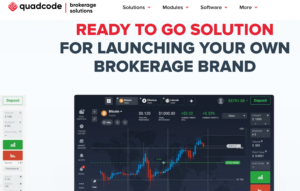Research: Which Tier 1 banks will give your OTC FX brokerage a client fund account? Answer: Most of them!
Want a client fund account with Barclays or HSBC? No problem! We look at the banks’ U-turn in which they now welcome FX brokerages as customers and why brokerages which go the yards to get good licenses in good jurisdictions are future-proofing themselves in this respect. Here are the results of our research from within London’s large Tier 1 banks

During the past year, FinanceFeeds has conducted an ongoing investigation into the global reluctance by large banks to accept retail FX firms as customers for commercial banking accounts in which they can store operating capital, and segregated client fund accounts.
In essence, Tier 1 banks in top quality jurisdictions including US, Canada, Britain, Australia, Israel and Cyprus – effectively all regions with a high level banking environment, good safety and compliance rulings and large institutions that carry corporate accounts for some of the world’s largest blue chip companies as well as being home to the lion’s share of the world’s retail FX industry – have been continuing to curtail their service and are increasingly turning away FX brokerages as customers.
This means that not only do brokers have limited options as to where to store their operating capital and client funds, but also are now becoming the target of thefts from corporate bank accounts because FX brokers are being increasingly forced to use third degree banks in less than salubrious regions, which, according to our research, is causing great difficulties in security of funds.
Whilst this dynamic most certainly prevails, there is some evidence of it subsiding among some of the Tier 1 banks here in London, therefore it is now a poignant juncture at which to revisit their criteria, and look at whether FX brokerages can establish client fund accounts with British banks.
During the course of this year, the business environment and income stream for many Tier 1 banks have both changed dramatically, with the core business activity of interbank dealing having been dramatically affected across the board.
There was a distinct commonality between the behavior toward entities which were considered high risk customers when opening client accounts, and the market share held in the interbank trading sector during the course of last year.
The largest banks in terms of FX order flow during 2016 were Citi, Deutsche Bank, HSBC, Barclays, RBS, Credit Suisse, JPMorgan and Goldman Sachs, with the British contingent of those market dominators having arrived at a decision to not only move away from various traditional retail banking activities in wider regions such as mainland Europe – Barclays sold off its entire European operations recently – but also to continue to maximize revenues efficiently by maintaining just one center for interbank FX activity in Canary Wharf or the City, and focus on that.
The result was twofold. Whilst banks took a very risk averse view with regard to extending counterparty credit to OTC derivatives firms, they realize that this is a huge and very effective business for them. They operate one center, and participate in a vast and liquid market, rather than have to maintain thousands of retail branches and serve small retail customers with massive personnel costs and regulatory fines eminating from the misselling of non-entity products such as payment protection insurance.
The other upshot was that by September last year it had become almost impossible to open a client fund account or operating capital account with a major British bank once the bank had any inkling that the applicant was an OTC FX brokerage.
Today, things are somewhat different.
Not only have the tables turned and the largest Tier 1 banks have experienced a complete change of fortune when it comes to their positions as market share leaders in interbank FX, but their attitude toward providing bank accounts to OTC FX brokerages has begun to change, too.
Now, the top five banks in terms of market share, control 41% of the global FX market, compared to 61% in 2009, which, although still marks London out as the absolute capital of all things Prime Brokerage, does mean that banks have to concentrate on who they are providing their liquidity to in order to continue to keep a toehold in a competitive market.
The banks, all of which conduct their entire FX businesses from London, saw their combined overall share of the market drop from 45% in 2016 to 41% in 2017.
On an individual basis, American banking giant Citi retained its place at the top of the ranking, controlling 10.74% of the overall market, a fall from nearly 13% in the previous year, and JP Morgan was the only other bank with more than a 10% share, controlling 10.34% of the market, compared to 8.79% in 2016.
Other banks in the top five were the London-based operations of Swiss bank UBS, Bank of America Merrill Lynch, and Deutsche Bank, also based in London. That remained the same as 2016’s ranking, with the exception of Deutsche Bank and BAML switching places. Deutsche Bank accounted for 5.68% in 2017, compared to 7.88% in 2016, the report showed.
Others within the top 10 were HSBC, Barclays, Goldman Sachs, Standard Chartered, and BNP Paribas, with Standard Chartered jumping from 15th in 2016 to 9th this year.
Thus competition drives the requirement to go after the business that had previously been snubbed, as this is also vital to their maintaining the OTC brokerages’ vital order flow that the banks will never be able to internalize themselves as they do not have the mettle to develop and continue to innovate in order to capture a retail audience so vast as the loyal one garnered by the large OTC brokerage sector.
HSBC, one of the most recalcitrant banks when it came to providing accounts to OTC brokerages is now not so averse to it.
FinanceFeeds spoke to a business manager in London today, who explained that as long as three years worth of management accounts could be provided, it would be regarded in the same vein by underwriters as any other business.
When asked whether a brand new brokerage with no account history would be accepted, the bank executive explained that it would not be prohibitive if the firm was new, and would be underwritten on a case-by-case basis, thus if the company had an FCA license and met specific criteria and was well capitalized with over £100,000 in its operating capital account, subject to extensive interviews with key directors, the answer would not be no, whereas this time last year, the answer when conducting this research was that HSBC would not even hear of taking such a client on board.
Aside from the stipulation that all client deposit accounts must be held only in British Pounds, there is no untoward view when looking at an OTC brokerage compared to that of last year.
This is encouraging, as one of the FX industry’s most prominent Tier 1 interbank dealer is beginning to realize that it is highly reliant on the operational aspects of its OTC partner clients.
Barclays, one of Britain’s most well recognized Tier 1 interbank dealers, has had to adjust its model considerably recently too.
Whilst the bank sticks firmly to its ethos of being one of the world’s most fervent proponents of ‘last-look’ execution, it has to realize that now is not a prudent time to continue to propagate last look practices as well as refuse the business of its giant OTC FX customer base from a counterparty credit and trading perspective as well as a brokerage client account perspective.
Barclays’ corporate standpoint on the reasons why it uses last look methodology is that being one of the world’s largest interbank FX dealers, it does not generally seek to reject trade requests. However, electronic spot FX market-making is a highly competitive industry and for the reasons set out above it necessarily exposes the liquidity provider to the risk of trading on incorrect pricing.
Barclays maintains that last look functionality is used to protect against these risks and allows liquidity providers to show considerably tighter electronically streamed prices than they otherwise could – something that the bank considers beneficial to every user of electronic FX trading platforms.
Beneficial to who? That is the question.
In January this year, the Foreign Exchange Professionals Association (FXPA), held a webinar on examining the implications of last look for the FX markets.
Attorneys with Steptoe & Johnson on the ‘last look’ webinar, advised market makers to be more transparent about how their last look systems operate.
“Regulators take a very dim view of institutional practices that emphasize a lack of transparency and that encourage employees to give either misdirection or less than complete information to counterparties when direct questions are asked,” said Mike Miller, litigation partner at Steptoe & Johnson, who spoke during the webinar.
In one high-profile case, a global bank used its spot FX trading platform to reject unprofitable trades. When customers asked why the trades were rejected, the bank reportedly gave “vague or misleading answers,” said Steptoe partner Jason Weinstein who analyzed the case during the webinar.
After a regulatory settlement, the bank posted detailed disclosures on its web site and also paid a steep fine, setting a precedent that could impact other banks, brokers and market-making firms.
FinanceFeeds has spoken at length with a number of senior executives within the institutional and prime brokerage sector recently, many of which have openly stated that banks do not like firms that offer ‘no last look’ execution, despite the regulatory and government derision aimed at the practice.
The very same BARX platform operates the BARX Gator system, which was unveiled in 2013, and works alongside the existing BARX FX single dealer platform, giving clients the choice of when to pass execution risk onto Barclays and when to take more themselves. Clients can then manage post-trade workflows to combine, split and roll-out completed orders.
Furthermore, there is complete anonymity for the client as counterparties on external markets only see the Barclays name. Barclays manages all the technology aspects for clients, such as the maintenance of multiple connections to multiple venues, without passing on fixed costs. Whilst this is just one example, it is not uncommon for interbank dealers with large FX market share by volume to operate similarly.
This is a massive moot point for regulators, and MiFID II is likely to contain stipulation to curb it, hence Barclays is now taking a look at how it can move closer toward meeting the demands of its liquidity takers for their business and operational requirements.
Speaking to Barclays this morning in London, FinanceFeeds can deduce that the bank is now not averse to offering operational capital and client fund accounts for FX brokerages, however the criteria is very stringent and somewhat bureaucratic, as would be expected.
Unlike that of HSBC, the bank has divided its risk assessment procedure for opening new accounts into two sections, that being one which onboards firms with a turnover of over £6.5 million, and one that assesses businesses with a turnover of less than £6.5 million.
Companies in the first category would be subject to a large audit and would likely have a long visit from a professional services company, however in this case that is not relevant because any FX brokerage with that sort of established turnover would already have its accounts well and truly established for many years.
Barclays meeting with FinanceFeeds this morning demonstrated that for firms with less than £6.5 million in turnover, and also, perhaps more interestingly, newly established FX brokerages which need their very first account to deposit client funds into, are very welcome indeed.
This represents a sea change from this time last year.
Barclays explained to FinanceFeeds today at the company’s business center in Bishopsgate, London, that “We certainly are able to open an account for an FX brokerage to hold client money that they would use as margin for FX trading on retail trading accounts.”
“The procedure is quite straight forward for a new company, or an existing company that wishes to move its account to Barclays” continued the business manager.
“We would just need the FCA license details, and a certified copy of the personal identification documents of the directors of the company, along with three months utility bills, three months bank statements, a copy of the Certificate of Incorporation, and the National Insurance numbers of all directors, or tax references if they have been working abroad” continued the business manager.
When asked whether specifically an FX brokerage would be subject to greater risk adversity when opening a client fund account compared to other FCA regulated businesses such as accountancy practices or law firms, the manager, who was very knowledgeable and appeared to understand the retail FX business very clearly, stated “We can do it regardless of the size of the business or the length of time it has been established.”
“We just need to assess the risk in a bit more detail, because it is a trading account that these monies would be used for funding, but it is really just a more detailed check, it is not at all prohibitive and is based on the same check that we perform for most firms opening a client fund account, including credit checks on the applicant which go back over a 6 year period, to check for things like county court judgements or bankruptcies, but that is pretty much all” he said.
Just as reported by FinanceFeeds through detailed investigation from our advantageous base in London last month, the Tier 1 banks certainly do want your business back. No longer are the horror stories that amassed last year likely to blight your business again, the manifestation of the inability to open bank accounts in reputable regions such as Britain led to a drive toward very dangerous Eastern banks in places like Georgia or other parts of the Caucasus, resulting in, in at least one case, several million in client funds having been stolen from the account with no recourse.
The sudden willingness by Britain’s finest to do business with our fabulous industry applies on a prime brokerage basis too.
Meeting with RBS last week in the Square Mile, it was clear that the company is absolutely willing to do business with OTC prime of prime brokerages.
The executives that met with FinanceFeeds the company’s head office, along with its NatWest Markets division, showed a very distinct interest in fostering prime of prime relationships with non-bank entities, as long as the relevant (and extensive!) due diligence is completed.
FinanceFeeds followed this up with some London-based prime of prime brokerages, and it appears that most certainly, RBS has the lowest entry barriers and is actually willing to do business as a Tier 1 counterparty. The bank realizes that London’s prime of prime sector is very well organized and is operated by large, well-backed corporations and in some cases hedge funds, and that the rules are followed diligently, hence its willingness to open its doors once again.
Perhaps the Tier 1 banks now realize that the stability and market presence of some of the largest FX firms is far too much to ignore, especially when the very same banks’ trading desks rely on them tremendously for a massive income stream that they are simply unable to emulate themselves, and with banks such as Swissquote, Saxo Bank and Dukascopy offering segregated individual client accounts to the brokers that take a prime of prime solution from them, competition dictates the market, even to the giants.
Speaking to Saxo Bank this morning, it is absolutely an advantageous edge that the firm offers segregated client money accounts which are specifically designed for OTC brokerage requirements. “Saxo can offer segregation via either Saxo Capital Markets UK or Singapore, where we offer segregated client money accounts (where these institutions hold the client funds at another large bank)” a senior executive at the firm explained to FinanceFeeds.
“It’s also worth noting that even though client fund protection is only mandatory for retail clients at SCML, we also extend this protection/service to institutional clients (for a small fee). Therefore this would work for a retail broker looking to offer their clients ‘client money protection and Saxo Capital Markets in UK and Singapore are both highly regulated of course (even though they don’t have banking licenses)” he said.
For an interesting take on why banks are unable to emulate the OTC sector’s ingenuity and therefore must accept it and work hand in hand, here is a podcast on exactly that subject.
Image: RBS head office, 250 Bishopsgate, London. Copyright FinanceFeeds









